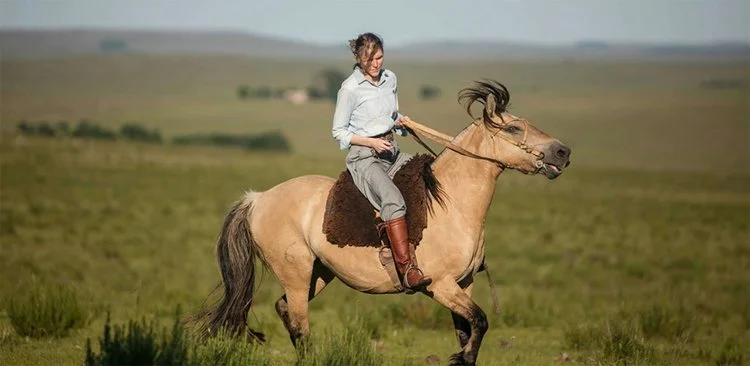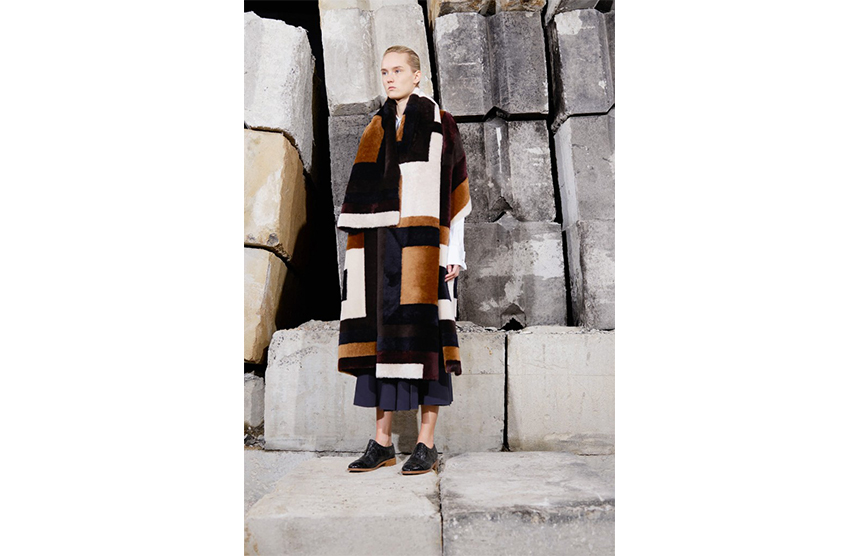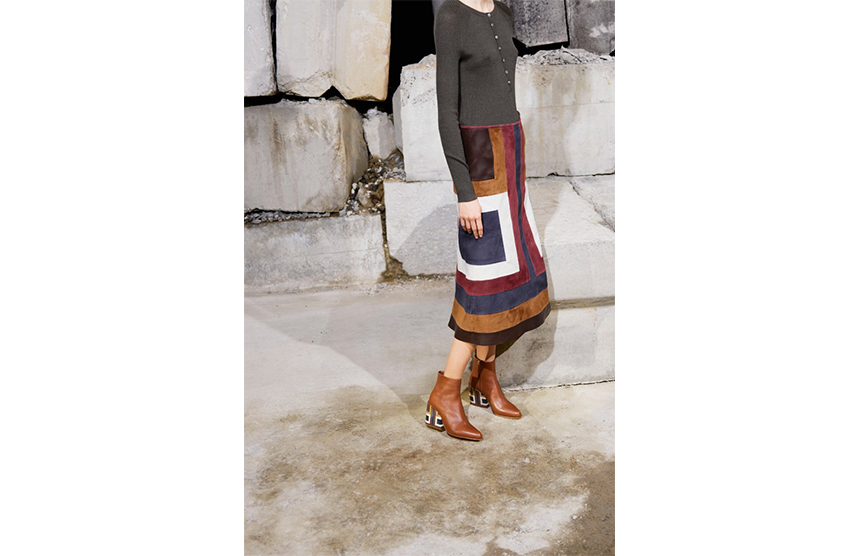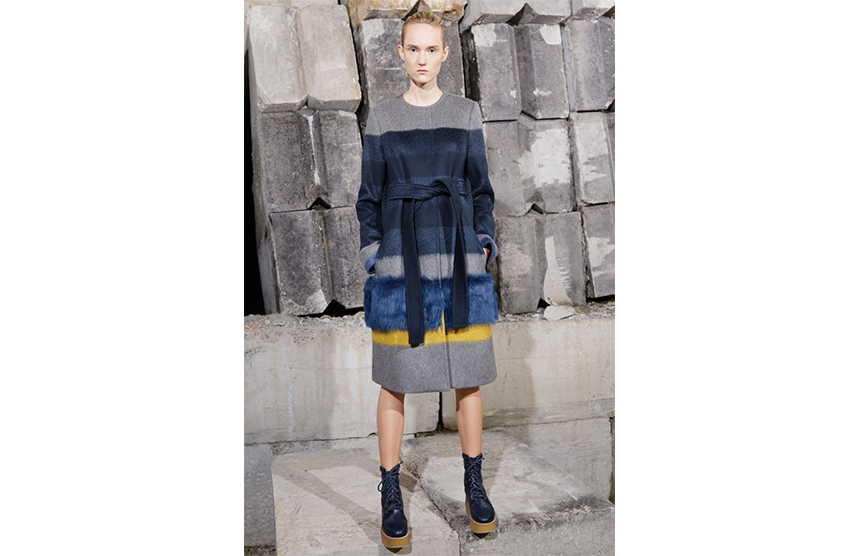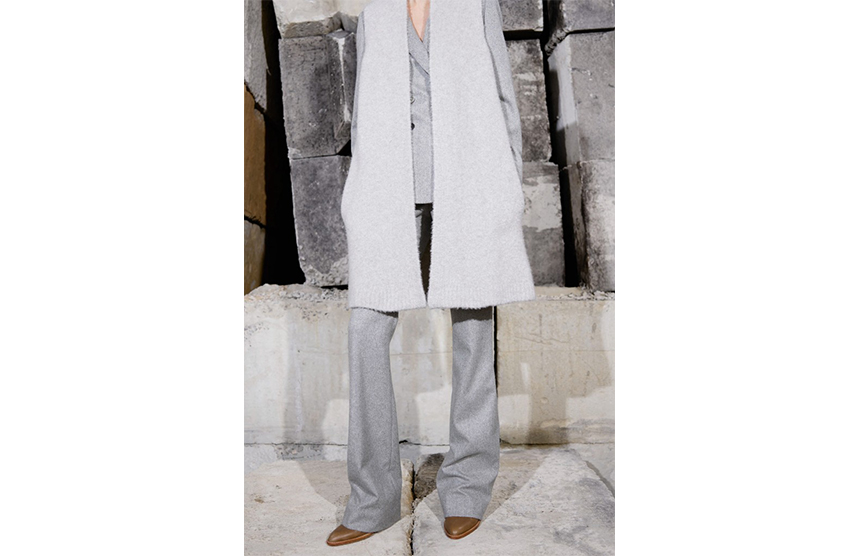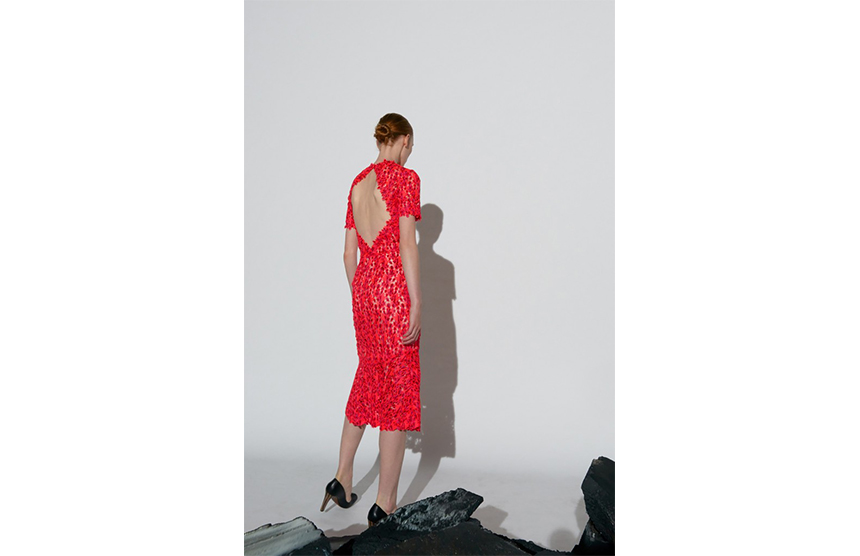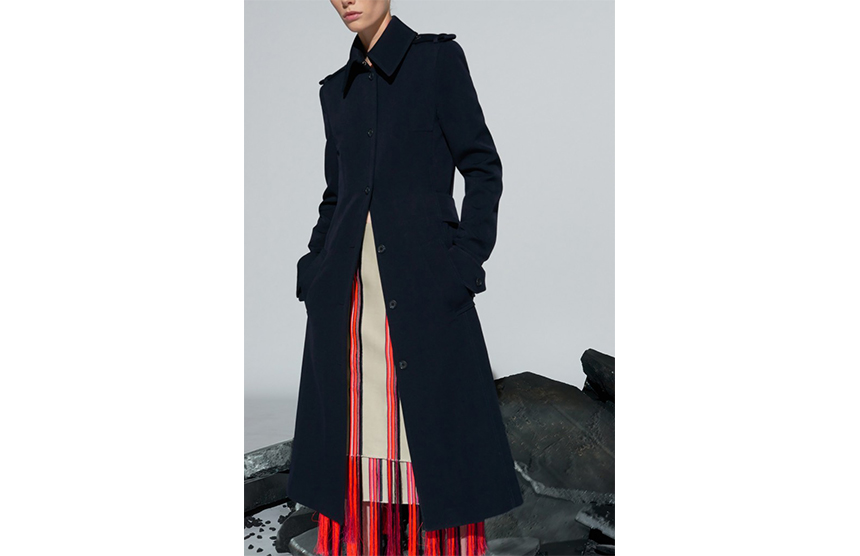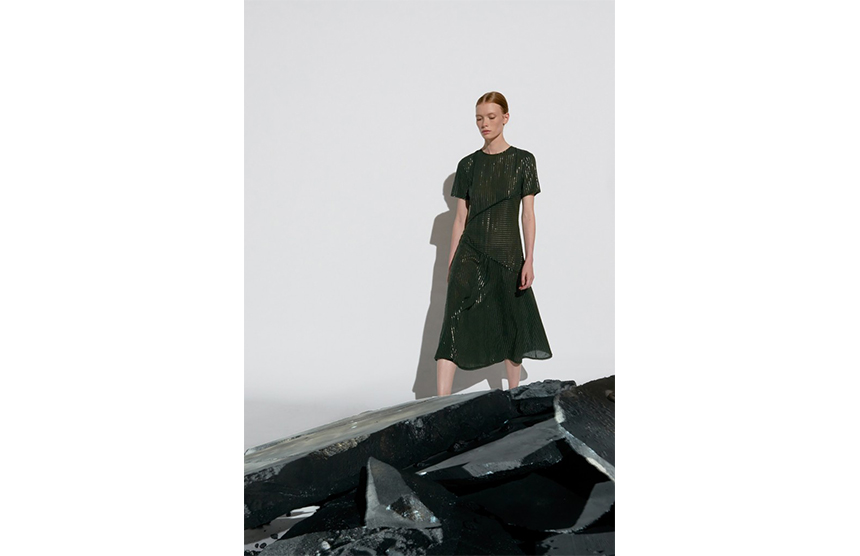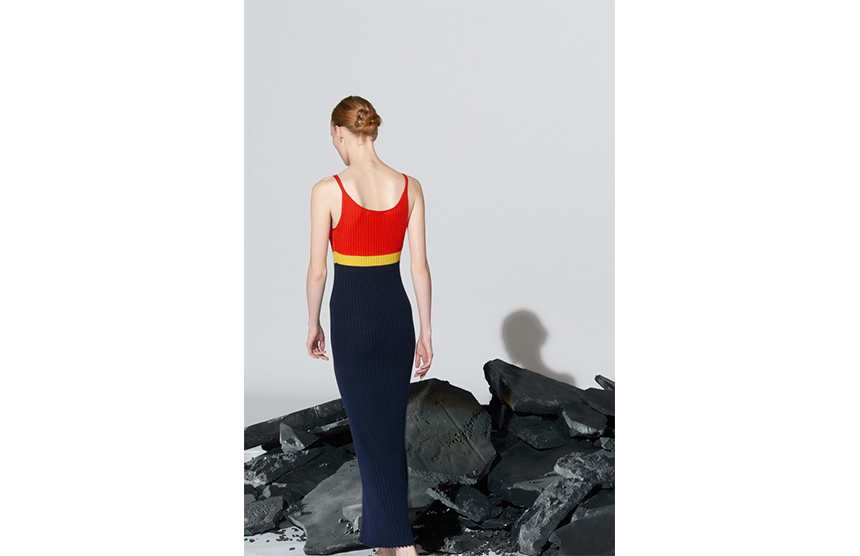“Pretty with a purpose.” That’s how Gabriela Hearst described her eponymous ready-to wear-line to The Wall Street Journal last year. This rather simple statement cleverly sums up the designer’s aesthetic, which marries chic wearability with impeccable craftsmanship, qualities that have become increasingly sought-after in today’s fashion firmament. And following the launch of her inaugural Fall 2015 collection, her want-to-wear wardrobe is certainly making waves.
Gabriela grew up on her family’s ranch in Uruguay and fond memories of her childhood fused with inspiration from her current New York City lifestyle inform her collections. Despite being married to Austin Hearst, the grandson of publishing mogul William Randolph Hearst, she is quietly and successfully forging her own path in the fashion world, very much letting the product speak for itself.
We had the pleasure of spending some time with Gabriela recently, where she gave us an insight into her influences, design processes and her thoughts on proving herself.
Do you have a particular woman in mind when you design?
I always choose a muse for the collection. Last season it was Oriana Fallaci, the reporter. She has interviewed some of the most powerful people in the world, and her book Interview With History is one of my favorites. I’m very attached to this type of woman, who has a courageous and strong character and is also extremely stylish. I’m attracted to super strong personalities who are fearless, but at the same time sensitive, and so when I design I design from a soft to a hard perspective.
Italian journalist Oriana Fallaci
"I’m attracted to super strong personalities who are fearless, but at the same time sensitive, and so when I design I design from a soft to a hard perspective."
So is it a woman’s hard-soft duality that you aim to capture?
Anything that’s close to the body has got to be really really soft, made with beautiful cashmere, super high gauge, light, very light and then I start layering the pieces. The exterior layers become the armour so the outerwear has got to be a bit more structured, it’s got to be more shaped. I want this woman to understand quality and I also want her to understand that things are made in an intelligent way for her. She’s a woman in action, so I basically want her to have it easy. I don’t want her to look at the clothes and be like ‘I don’t know what to wear’. She can decide what to wear in 5 minutes because she doesn’t have time to do this.
What are the types of women who have been most responsive to your designs - any surprises?
All women love the collection, this is my biggest surprise. That is so interesting. They touch it and they feel, and they’re very reactive. My sister who has a PhD at Cornell and is a veterinarian, she will use a cashmere sweater for the dairy farmer at 5 o’clock in the morning and then you have a woman on the Upper East Side having coffee in the same sweater.
How does your upbringing on a ranch in Uruguay influence your work?
I value how things are made on the ranches. We produce grass-fed beef and merino wool on my farm and it’s organic and certified and done in the same way that it has always been done and I want to bring the same values to fashion. I want to make the clothes the same way they used to be made, with care and attention, made to last, so my commitments are both the same. It has to be better for everyone.
What is your favorite piece from your current collection?
I love them all, but if I had to choose one piece it would be the double face cashmere coat that’s reversible. It goes from a day outfit for when you’re working hard in the office and you can then turn it around and it's dark navy so you can go out in it at night.
You pay a lot of attention to details, particularly hardware.
We’ve custom-made the hardware from the start. When we launched the collection a year ago I wanted it to be a collection that was identifiable, so I paid a lot of attention to the hardware. One of the things that you’ll find in all our pants and skirts is the custom-made stirrups that are made out of metal, either rose gold or silver depending on the fabric of the garment. And then for our outerwear we have a sailing shackle, because my husband is a sailor, and a stirrup because that’s from my background, with a wood tack in the middle, the shackle, to represent the land. I wanted a vocabulary to be explained virtually in the collection.
Gabriela at her family's ranch in Uruguay
Your personal style exemplifies the brand. What sort of sartorial balance do you try to achieve when getting dressed?
Now that I have the collection that I’ve dreamed of, I’m always dressed in GH, but it’s more like a uniform. I went to a school that required a uniform and I grew up in a rural environment where the men are dressed in a particular uniform, the Gauchos, so I’m very used to certain ways of dressing. I take a lot of reference from the man’s world. I look at how my husband dresses and what he likes, the utilitarian aspect. I balance the masculine and feminine in a way that’s comfortable. I do think it’s important that women feel comfortable and powerful at the same time. Dressing changes your attitude and empowers you too.
Which designers, past and present, do you admire?
I would have to say Elsa Schiaparelli, the people she was surrounded with, the type of art she created with these artists at the time. Imagine Giacometti designing your brooches today or Salvador Dali designing a print? Being able to have these amazing artists collaborate with you is a big dream. I also like Stella McCartney. She didn’t want to work with leather because she’s vegetarian and doing a luxury line, it took years. I mean it took years for people to understand that kind of commitment and to not care anymore that it’s not leather, and the fact she stuck to her ground on that I respect very much. Also she is a mother, and there is an emphasis on being a family and having children, and respect for a dual life. I have admiration for people who have values that they stick up for.
What does luxury mean to you?
Luxury to me means choice and being smart with that choice. Having access to big brands, to different things and choosing correctly. First because you love it and it produces an emotion for you, and then because you’re choosing well. I think that’s luxury.
Do you consider yourself a feminist and do you think that there is a place for feminism in fashion?
I’m often asked whether I think that men and women are equal, and I always say no - women are 25% better! I do think it’s our time. It’s time for us to think about our responsibilities to help other women and to empower ourselves, and the older I get I get a lot of support from my female friends. I think that the relationship between women is really important. So the answer is yes.
The fashion industry is famously tough. Do you feel that you’ve had to prove yourself?
Yes I do. I do think that I have had to prove myself, but more to prove it to myself. I was very aware of what people would think when we launched the brand. I’d been designing for ten years, but my husband’s last name is well known in the media industry so the product came first. It was very easy to be typecast but I wasn’t, the product spoke for itself, so I’m really happy with what we created.
"I do think that I have had to prove myself, but more to prove it to myself. I was very aware of what people would think when we launched the brand."
What would people be surprised to learn about you?
That I sound like Jennifer Lopez but I look Anglo-Saxon. But I’m 100% Latin. My blood could be tested and it’s all Italian and Portuguese background.
Gabriela's NYC
Sant Ambroeus on Lafayette Street, SoHo, NYC
Sant Ambroeus, Soho “Ali, the manager, is amazing, a really great guy.”
Tracie Martyn (facialist) “You go for a facial, but you come out so relaxed you feel like you’ve had a ten-day holiday.”
Kinokuniya Books, Bryant Park A specialist bookstore housing Asian books, magazines, DVDs and stationery.
The Met The largest art museum in the United States is an iconic Manhattan venue.
To see Gabriela's Fall/Winter '16 collection, visit Moda Operandi here.

